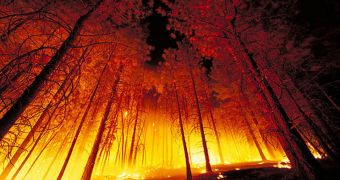Scientists are currently seriously considering using prescribed burns to manage at least some portions of the forests in the United States. They say that this method, which relies on burning certain swaths of land on purpose, has the ability to control the spreading of wildfires, and to therefore reduce the carbon footprint that the forests in the western United States have on the atmosphere. This approach has been used for a long time by foresters, for protecting larger trees and the underbrush from the flames.
“It appears that prescribed burns can be an important piece of a climate change strategy. If we reintroduce fires into our ecosystems, we may be able to protect larger trees and significantly reduce the amount of carbon released into the atmosphere by major wildfires,” says expert Christine Wiedinmyer, the lead author of the new investigation. She holds an appointment at the Boulder, Colorado-based National Center for Atmospheric Research (NCAR). The new investigation was sponsored by the US National Science Foundation (NSF), which also provides the bulk of the funding for the NCAR.
According to the study, details of which were published in this week's issue of the respected scientific journal Environmental Science & Technology, it would appear that prescribed (or controlled) burns may be more beneficial to the environment as well. Fire is a natural part of the forest ecosystem, and scientists say that by controlling which plants get torched, the release of massive amounts of carbon dioxide could be averted. The dangerous greenhouse gas (GHG) is stored inside trees as the vegetation grows, but is released as soon as fire starts eating away at them.
“When fire comes more frequently, it's less severe and causes lower tree mortality. Fire protects trees by clearing out the fuel that builds up in the forest,” says Northern Arizona University professor Matthew Hurteau, who was also a coauthor of the new investigation. “While it can be costly to set controlled fires, there is also a cost in leaving forests vulnerable to larger fires. More research can help forest managers make better decisions about our forests and climate change,” says Wiedinmyer.

 14 DAY TRIAL //
14 DAY TRIAL //